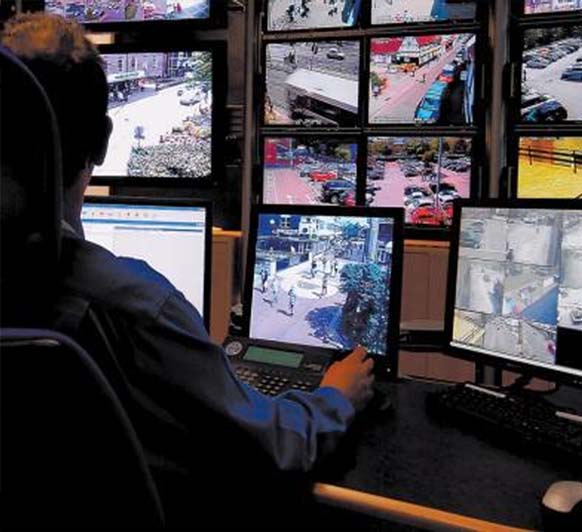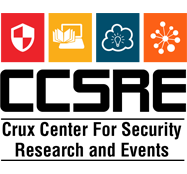
Login Into Your Account

Reset Password
Law enforcement Technology,Law enforcement Agency,Policing Technology,Smart Policing India,Homeland Security India,Border Security India,Border Management India,Cyber Crime news,Cyber Security news,Safety App,Public Safety App,Security App,Women Safety App,Police Initiative,Surveillance news,National Security news,isc event 2016,isc event 2017,scada event 2016,scada event 2017,Critical infrastructure security event 2016,Critical infrastructure security event 2017,iot summit 2016,iot summit 2017,Internet of things seminar 2016,Internet of things seminar 2017,iot seminar delhi 2016,iot seminar delhi 2017,iot conference delhi 2016,iot conference delhi 2017,top security event,security event,security event 2016,security event 2017,security conference 2016,security conference 2017,cso summit 2016,cso summit 2017,Corporate security event,Corporate security conference,security research india,homeland security research india,security think tank india
Law enforcement Technology,Law enforcement Agency,Policing Technology,Smart Policing India,Homeland Security India,Border Security India,Border Management India,Cyber Crime news,Cyber Security news,Safety App,Public Safety App,Security App,Women Safety App,Police Initiative,Surveillance news,National Security news,isc event 2016,isc event 2017,scada event 2016,scada event 2017,Critical infrastructure security event 2016,Critical infrastructure security event 2017,iot summit 2016,iot summit 2017,Internet of things seminar 2016,Internet of things seminar 2017,iot seminar delhi 2016,iot seminar delhi 2017,iot conference delhi 2016,iot conference delhi 2017,top security event,security event,security event 2016,security event 2017,security conference 2016,security conference 2017,cso summit 2016,cso summit 2017,Corporate security event,Corporate security conference,security research india,homeland security research india,security think tank india
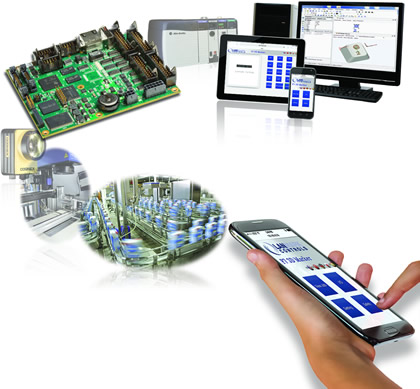
Industrial Internet of Things (IIoT): Market Opportunities for Solutions, Products, and Services 2016 - 2021
Initially focusing on improving existing processes and augmented current infrastructure, IIoT will evolve to encompass next generation methods and procedures such as "teleoperation" (operation of a machine at a distance), tele-robotics, and other areas that rely upon interface and control of real objects by virtual objects. Mind Commerce sees IIoT as one of the leading areas for overall IoT adoption due to many factors including the incidence of many high value use case scenarios, which is an issue for many consumer oriented applications and services.
This research evaluates the technologies, companies, solutions, and market outlook for IIoT. The report evaluates key trends, analyzes market drivers, and provides forecasting for IIoT for the 2016 - 2021 period. All purchases of Mind Commerce reports includes time with an expert analyst who will help you link key findings in the report to the business issues you're addressing. This needs to be used within three months of purchasing the report.
Select Report Findings:
The North American market for IIoT will reach to $599B with a CAGR of 13.1%
The European IIoT market will be the highest with $629B with a CAGR of 11.9%
One of the leading IIoT segments, healthcare, will reach $338B with a CAGR of 10.5%
The market for artificial intelligence in IIoT Teleoperation and Tele-robotics will reach $19B by 2021
APAC IIoT market CAGR will be 14.4% with smart factory deployments in China and Indian leading the way
Report Benefits:
Forecasts for IIoT marketplace 2016 - 2021
IIoT vendor analysis, strategies, and outlook
Identify leading apps, services, and solutions
Identify key companies in IIoT security solutions
Learn about teleoperation and tele-robotics in IIoT
Understand impact of IIoT supporting technologies
Identify leading IIoT market segments and opportunities
Recognize impact of IIoT on people, processes, and technology
Target Audience:
Telecom service providers
Manufacturing companies
Semiconductor manufacturers
Embedded systems companies
Systems integration companies
Wireless device manufacturers
Systems integration companies
Sensors and actuators suppliersTelecom and IT infrastructure suppliers
IoT and connected industrial service providers
Read the full report: http://www.reportlinker.com/p04217053-summary/view-report.html
About Reportlinker
ReportLinker is an award-winning market research solution. Reportlinker finds and organizes the latest industry data so you get all the market research you need - instantly, in one place.
http://www.reportlinker.com
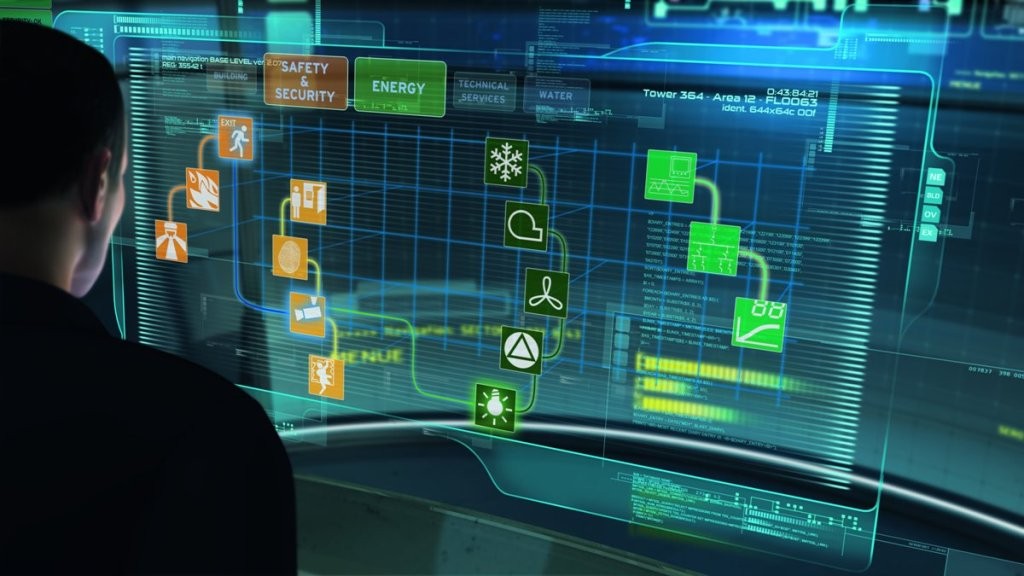
Industrial Internet of Things (IIoT) - Market For AI in IIoT Teleoperation and Tele-robotics Will Reach $19B by 2021 - Research and Markets
Initially focusing on improving existing processes and augmented current infrastructure, IIoT will evolve to encompass next generation methods and procedures such as "teleoperation" (operation of a machine at a distance), tele-robotics, and other areas that rely upon interface and control of real objects by virtual objects. Mind Commerce sees IIoT as one of the leading areas for overall IoT adoption due to many factors including the incidence of many high value use case scenarios, which is an issue for many consumer oriented applications and services.
Select Report Findings:
The North American market for IIoT will reach to $599B with a CAGR of 13.1%
The European IIoT market will be the highest with $629B with a CAGR of 11.9%
One of the leading IIoT segments, healthcare, will reach $338B with a CAGR of 10.5%
The market for artificial intelligence in IIoT Teleoperation and Tele-robotics will reach $19B by 2021
APAC IIoT market CAGR will be 14.4% with smart factory deployments in China and Indian leading the way
Companies Mentioned:
2 AT&T M2X
AGT International
ARM Holdings
AT&T Inc.
B+B SmartWorx
Bayshore Networks
Bosch
Cisco System Inc.
Contiki
Digi International
Echelon Corporation
Elecsys Corporation
General Electric
Jasper Technologies Inc. (Cisco)
Lynx Software Technologies, Inc.
(10+ More)
Key Topics Covered:
1 Introduction
2 Executive Summary
3 Overview
4 IIoT Technologies
5 IIoT Global Market Analysis and Forecasts 2016 - 2021
6 Company Analysi
For more information about this report visit http://www.researchandmarkets.com/research/7xzdzb/industrial
Contacts
Research and Markets
Laura Wood, Senior Manager
press@researchandmarkets.com
For E.S.T Office Hours Call 1-917-300-0470
For U.S./CAN Toll Free Call 1-800-526-8630
For GMT Office Hours Call +353-1-416-8900
U.S. Fax: 646-607-1907
Fax (outside U.S.): +353-1-481-1716
Related Topics: Internet and E-Commerce, Internet of Things and M2M
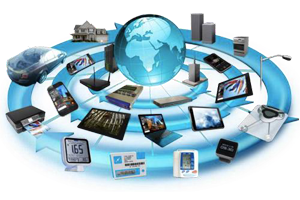
Connecting India: Major push to Internet of Things will not come from consumers, says report
While the report highlights that the IoT market in India would increase from $5.6 billion with 200 million devices in 2016 to $15 billion with 2.7 billion devices by 2020, it states that the growth will be predicated on the start-up ecosystem. Start-ups are surely expected to lead adoption, but a lot would also depend on the government providing an enabling infrastructure. With the country still struggling to provide full 3G coverage, India would need a more concerted approach rather than just start-up initiative to reach that mark. With recent developments highlighting that the internet giants are targeting ways to provide economical usage of data via their apps, the IoT dream may not be as easy to achieve. But then, technology has the ability to surprise, and it will probably do that again.
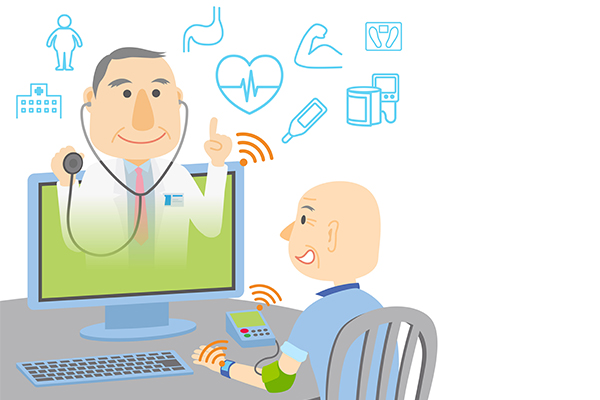
Why healthcare will never be the same again with IoT
hcl_iotIoTization – Redefining Boundaries of Healthcare
Healthcare today is undergoing a radical shift with increasing play of wider ecosystem involving data scientists, aggregators, technology giants & device manufacturers. The future of healthcare will be marked by an ecosystem that will essentially evolve from isolated smart systems to system–of–systems connecting patients, devices & hospitals – with IoT being at the core of this transformation.
Smartphones, wearables and other medical devices are increasingly being seen as a replacement for traditional pedometers, Sphygmomanometers (blood pressure monitor), glucometers & calorie counters, and are soon expected to find a significant place in a physician’s diagnostic toolbox. The evolving ecosystem and landscape of connected devices will expand the ability of healthcare providers to customize the treatment for patients, enabling better ways to predict, prevent and cure, improving the longevity of life.
IoT – The New Resident Doctor
Remote Patient Monitoring solutions and Disease Management Platforms will facilitate better Care Coordination across the Care Continuum by connecting patients with their Physicians and Caregivers in a more effective way. For instance, Intel has collaborated with Michael J. Fox Foundation to improve monitoring and treatment of Parkinson’s disease, wherein they are developing a connected platform to detect patients’ patterns, collected through wearable technologies, and monitor symptoms that otherwise go unnoticed during diagnosis. Such integration of technology and analytics is leading to disruption in healthcare industry. IoTization of these solutions will also have the potential to give the Bio–Pharmaceuticals sector ability to disrupt the current ‘old school’ clinical research model with simplified and adaptive Clinical Trial design and implementation of a more patient centric drug development program.
IoT enabled remote diagnosis and health checkups can eliminate the need to move patients with chronic illnesses to care homes. For instance, the percentage of people above 60 years of age is expected to rise from 11% to 15% between 2010 and 2020 and close to a billion population suffering from chronic illnesses requires continuous monitoring. Predictive models, along with the insights gleaned from healthcare IoTization, will facilitate the bedbound residents with self-monitoring of their health parameters. Businesses will be able to automate their processes, improve efficiencies and bring the providers closer to the patients by enabling real-time patient access, thus solving some of the biggest challenges in healthcare industry today – time and accessibility.
Unprecedented Business Opportunities
Empowered by the market need and evolving potential of IoT, new business avenues are being generated for service players to build & deploy smarter platforms in the ecosystem. New Services, along with technology integration are redefining the business model of the healthcare. Businesses will compete on their ability to deliver quantifiable end results in real time and it’s the end result that will begin to command a fee. For instance, Obama care mandates fee-for-outcome per patient where single payment is paid to the hospital for a defined episode of care.
All this will require much more automation, better predictability and greater collaboration in healthcare ecosystem to offer a reduced cost of service. Service providers have huge opportunity to ride this technological shift with some of the primary use cases being:
• Supply chain optimization: According to Cardinal Health, about $5Bn of medical waste is generated annually owing to ineffective inventory and supply chain tracking. Real-time monitoring & tracking could trigger alerts for automatic replenishment of supplies limiting the costs with increased efficiency
• Reduced machine downtime: The average downtime cost for a healthcare related outage per incident is about $690K. According to a McKinsey study, there is potential to save upto $2.5 trillion annually by 2025 on account of the industrial IoT
• Reduced turnaround time with process automation: Continuous tracking of patients’ health through remote monitoring can reduce mortality rates by about 45% and on average firms have potential to realize upto 89% reduction in turnaround time owing to improved connectivity and process automation
IoT adoption lies at the core of all these humungous business benefits which will have a direct impact on both top line and bottom line. For instance: at HCL ‘IoT Works’ – we are already witnessing significant increase in traction with our customers, for building solutions in these use cases. With one of the leading partners – just developing a gateway between client’s sterilization and verification devices helped improve device uptime by 27%, reduced field visit costs by 18%, and eliminated manual data reconciliation, ultimately leading to a significant improvement in equipment sales.
The time to act is now!
The emergence of the new IoTized healthcare ecosystem, with IoT being the glue binding the parts together poses a set of opportunities as well as challenges. Efficiencies and experiences will improve manifold, while we will become more vulnerable to security and privacy threats with increasingly sensitive data being generated and getting accessible. This double edged sword of IoTized Healthcare is sure to swing its way to prominence in the years to come; the difference between having the edge and being edged out boils down to how well organizations understand IoT and start acting towards building a strategy today. One thing is clear – IoT will ensure Healthcare will never be the same again!
Read more: http://forbesindia.com/blog/health/why-healthcare-will-never-be-the-same-again-with-iot/#ixzz4MNLP6fJ1
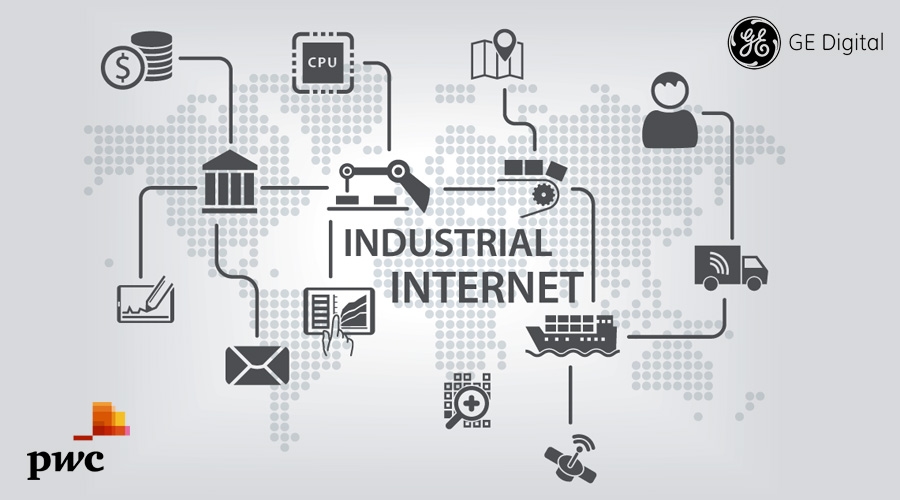
PwC and GE Digital combine to provide Industrial Internet of Things
The Industrial Internet of Things (IIoT) promises to integrate humans and intelligent machines along horizontal and vertical supply chains, delivering a host of improvements to productivity and reducing costs. The technology is part of the wider development of the 'Internet of Things' (IoT) – a movement which, according to McKinsey & Company, could add an additional $11.1 trillion per annum in economic benefits to the globe's economies by 2025.
Several studies, as well as real-life cases, show that IIoT technologies – the application of IoT in industrial sectors such as manufacturing and engineering – have the potential to generate considerable benefits. Accenture for instance estimates that IIoT could add $14.2 trillion to the GDP of 20 major economies by 2030, while a Strategy& and PwC report concludes that Industry 4.0 – a central feature of IIoT – could add $493 billion in revenue gains per annum over a five year period.
The large investments into IIoT means demand for expert support and advisory services is riding high, inciting several consulting firms to bolster their capacities in the domain. PwC is the latest consultancy to jump on the bandwagon – its strategy includes, besides the traditional approaches of growth from within and targeted acquisitions – the development of a joint offering alongside GE Digital.
PwC and GE Digital combine to provide Industrial Internet of Things
The alliance between PwC and GE Digital extends across PwC's network firms in a host of countries, including the US, the UK, Canada, China, France and Singapore. The agreement aims to leverage the skills and capacity of the respective partners to provide clients with a wider range of services. PwC brings its business transformation capabilities to the table, while GE will offer its Predix cloud-based operating system for IIoT to clients. The two firms will, based on individual company needs, create a suite of applications that are integrated into the wider Predix system.
Commenting on PwC's ramp up in the IIoT space, Paul Gaynor, Global Technology Consulting and Alliances Leader at PwC, says, "The Industrial Internet is ushering in significant disruption as executives grapple with shrinking profit margins, slowing growth, cost volatility, and changing customer demands."
Asked about how PwC's alliance with GE Digital will help the firm differentiate itself from the rest, Gaynor says the joining of forces will allow the Big Four firm to look at solutions through a holistic lens, "one that integrates strategy, security, technology, processes, people, and data."
The alliance will also concentrate on supporting organisations with embedding IIoT within their frontiers, an aspect which comes with significant hurdles as the technology still finds itself in its infancy. One major concern is cyber security, as large numbers of interconnected devices add new avenues to penetrate systems; another concern is a lack of ubiquitous communication standards.
Through an integral approach, leveraging PwC’s business transformation services with GE Digital's technology expertise, Denzil Samuels, GE Digital's Head of Global Channels and Alliances, believes the partners can provide customers with "the ability to leverage new insights that were not possible before", which down the line is set to spark "extraordinary results".
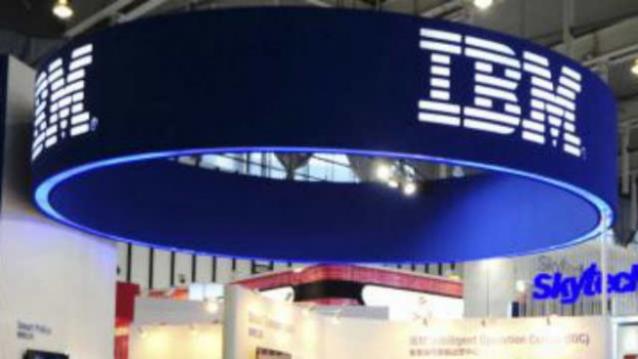
Industries have started embracing Internet of Things, says IBM
The IoT, which gives many billions of machine parts the capability to send and receive data, is vital to IBM’s turnaround as it has refocused on areas that promise profitable growth such as analytics, security and cloud services. That a tipping point may now be being reached for the industrial Internet is borne out by a recent global survey of 4,500 corporate decision-makers in 27 countries by market research firm IDC that found the market is moving beyond proof of concept projects to full-scale project deployments.
“We think 2019 is going to be that inflection curve where the market really takes off,” IDC IoT analyst Vernon Turner said of how business cases proven over the next two years will set the stage for IoT to hit the mainstream. Nearly a third of corporate customers in the IDC survey said they have launched IoT projects, while another 42 percent said they plan to do so in the next 12 months.
To meet rising demand, IBM said it plans to hire 1,000 people over the next few years at its new global IoT headquarters in Munich, executives said. That is part of a broader move by IBM to hire 25,000 new employees in growth areas globally, while cutting jobs and costs in slower growing hardware and services businesses. “There was so much tire-kicking a year ago. Now you are seeing adopters in every single industry actually building solutions,” IBM’s vice president in charge of IoT platforms Bret Greenstein said in an interview.
IBM will announce on Tuesday a new strategic partnership with German industrial ball bearing giant Schaeffler to supply it with data analytics, cloud services and consulting, in a deal where both firms invest and jointly market services.
The deal covers areas ranging from product development to manufacturing to preventive maintenance once cars, trains, wind turbines and other moving parts are sold. IBM’s global head of IoT business Harriet Green said she has four to five big deals in the pipeline with Asian firms involved in manufacturing and robotics. IBM also said it signed up new clients such as Dutch drone maker Aerialtronics to use IoT for inspecting oil rigs, power lines, cellphone towers and city traffic patterns.
So far, however, high-growth areas – “strategic imperatives” in IBM parlance – have failed to offset declines its overall business has seen for the last five years. In its latest reported quarter, IBM’s “strategic imperative” businesses, which include IoT, slowed to only 7 percent growth, while core businesses in services and hardware fell 14 percent year-on-year, Bernstein Research calculates.
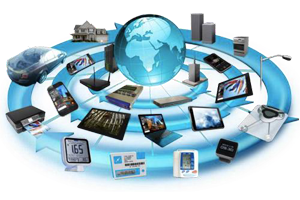
IoT startup: Intel is looking for you
While the programme, launched back in 2014, is piloted in Israel, startups from all over the world can apply to join. Guy Grimland, a spokesman for Intel Israel, extended the message specifically to the Nordic & Baltic region at DLD Innovation Festival Tel Aviv , and invited “to come to co-operate with Intel in the cloud, IoT and Big Data”.
The 6-8 months programme offers access to the chipmaker’s engineers and resources. Startups are required to be early seed stage and have a link to Intel technologies.
Yvonne Palacio, IoT Business Development manager & Head of Ignition Lab, spoke at the innovation festival about a conscious transition towards the “experience market” of the future. At the festival, Intel was attracting startups to collaborate with them by showcasing current projects in gaming, logistics, housing, health, fashion retail, cinematography, VR and automated flight. Some of the presented partners were Airobotics, Memomi Labs Inc. and EnsurE&C.
Israel is one of the key hubs for Intel, and currently, around 10 percent of the firm’s R&D activities are based there.

Industrial IoT to Be a Game Changer
While some IIoT implementations may outsource communications for part or all of their field area networks, visionary leaders are taking the time to understand the technologies in detail. Implementing a private network that addresses current needs with room to grow, and provides flexibility and scalability to meet future needs as the business evolves. Organizations with a communications infrastructure strategy will be better positioned to scale rapidly with great ease and confidence. This strategy provides a smart and sustainable way to collect the vital field information an organization needs to offer superior services at substantially lower total cost of ownership than their competitors. This translates into a significant competitive advantage and cost savings over time.
Communications Infrastructure Strategy Has Four Key Components:
Wireless technology- While the transmission speed of fiber optics is considered optimal by many, wireless technology is using innovative Massive Multi-User Multiple-In/Multiple-Out (MU-MIMO) transmission techniques to dramatically increase over-the-air performance and reliability, which has made it a viable and legitimate medium for transporting voice, data, and video. Another significant advantage of wireless technology is the fact that it can be rapidly deployed to remote locations without the trenching and labor cost of installing fiber. When network operators consider the communications transmission speed, reliability, and total cost of ownership - wireless technology is the preferred solution.
Centralized management - Wireless communications systems may include equipment using both licensed spectrum and license-exempt spectrum in both narrowband for low bandwidth applications, such as process control and SCADA, and broadband for high capacity applications such as video surveillance and remote Internet access. The entire network can be managed from a central cloud-based or standalone "on-premises" system. A single system, equipped with open APIs, allows network operators to access real-time and historical network infrastructure statistics from the edge of the field area network to the operation center. These open interfaces permit external applications to extrapolate big data for analysis. In addition, a centralized management system enables - end-to-end monitoring of device and network health and performance, reaction to network alarms, and compliance reporting. Intelligent centralized management allows for control of the network, including simplifying device on-boarding, troubleshooting, firmware and software upgrading and uniformity via auditing, and "zero touch configuration" techniques via cloud- or NOC-based smart configuration templates, equipment life-cycle management, and centralized password management for protection of devices on the network.
Communications security - The need for security for IIoT applications cannot be overstated. As technology is used to control vital utilities such as water, power, manufacturing, and transportation, any disruption can have catastrophic consequences. New threats to network security are constantly being introduced. The communications infrastructure must have layered security, including identity-based user accounts with positive authentication, tiered administrative permissions for system access, and equipment with robust over-the-air encryption of the radio transmission signals. Secure protocols, such as HTTPS and SMNPv3, are necessary in addition to threat detection, event auditing, and denial of service methods built into the logic and framework of the wireless equipment and management interfaces. In short, the wireless equipment must adhere to stringent security guidelines to ensure compliance to Information assurance standards.
Design for Scaling and Resiliency - Demand for connectivity will increase as the business grows. The network must be designed to accommodate expansion from day one. This best practice in implementation optimizes operation, especially in changing times. As additional IoT devices are developed for new applications and integrated, the communications network will expand well beyond the initial deployment. As these capabilities are deployed into field area networks and the real world environment, device failures must not hinder the overall operation. By strategically adding redundancy, critical operations can continue when some devices fail. By designing for scalability and resilience, network operators can ensure performance of the current system while having confidence in their plans for future expansion.
Over the lifetime of the network, devices will be added and retired depending on the needs of the business and evolution of technology. Core business analysis applications will evolve to include new information sources. The communications infrastructure network that best meets the needs over the long term for reliability, security, scalability, and manageability will provide the lowest total cost of ownership while being malleable to support the rapidly evolving business drivers.
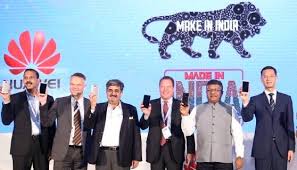
Flex ups focus on IoT, wearables, invests Rs 62-cr for Huawei smartphone production
The company, which started operations in India in 1996 and has invested over 'couple of $ 100 million' since, has kept aside 100 acres land to scale up operations as it gets more contracts from local players in mobile phone and other industry verticals, top executives at the company told ET.
"If you look at carrier spend globally, it's going flat to down, and most of the traditional spend even from carriers has gone towards data centre," said Jeff Reece, head of Flex Telecom segment.
"We're not trying to decrease our revenue in that area (telecom) but what we are trying to do is increase other areas to diversify such as automotive, aerospace defence, medical, industrial, a lot of technology is emerging in IoT, wearables etc," he added, highlighting some of the 12 segments, each of which makes up over a billion dollars in business globally for the company.
People familiar with the company's investment plans said that Flex, earlier known as Flextronics, has invested $62 million in the Chennai facility so far and will scale up the investment by 15% or $9.3 million (Rs 62 crore) for Huawei's phone manufacturing plans.
Flex has dedicated capacity of 3 million units a year for Huawei, from a total of 10 million at its Chennai plant where it also makes smartphones for Lenovo and Motorola. Production from the facility is set to start making Honor phones from October first week. The contract electronics maker is opening up 45-70 exclusive service centers in India, and is hiring around 1500 new employees to support production and after sales functions, to add to its existing workforce of 10,000.
Flex considers India an important market and expects more manufacturing contracts to come from new mobile phone players. Executives said that the company's ability to quickly scale up production, besides after sales service and logistics back-end that will offer it an edge over other manufacturers.
"We have been strategically investing and developing over the last few years from services standpoint to go to the market with manufacturing, which is the differentiation. Nobody else is not doing anything like this in India," Pat Ring, senior vice president at Flex said.
The company has four main facilities that engage in services including Bangalore, Gurgaon, Mumbai and Kolkata, and it also operates stocking locations for customers that aid in supply to retailers and distributors.
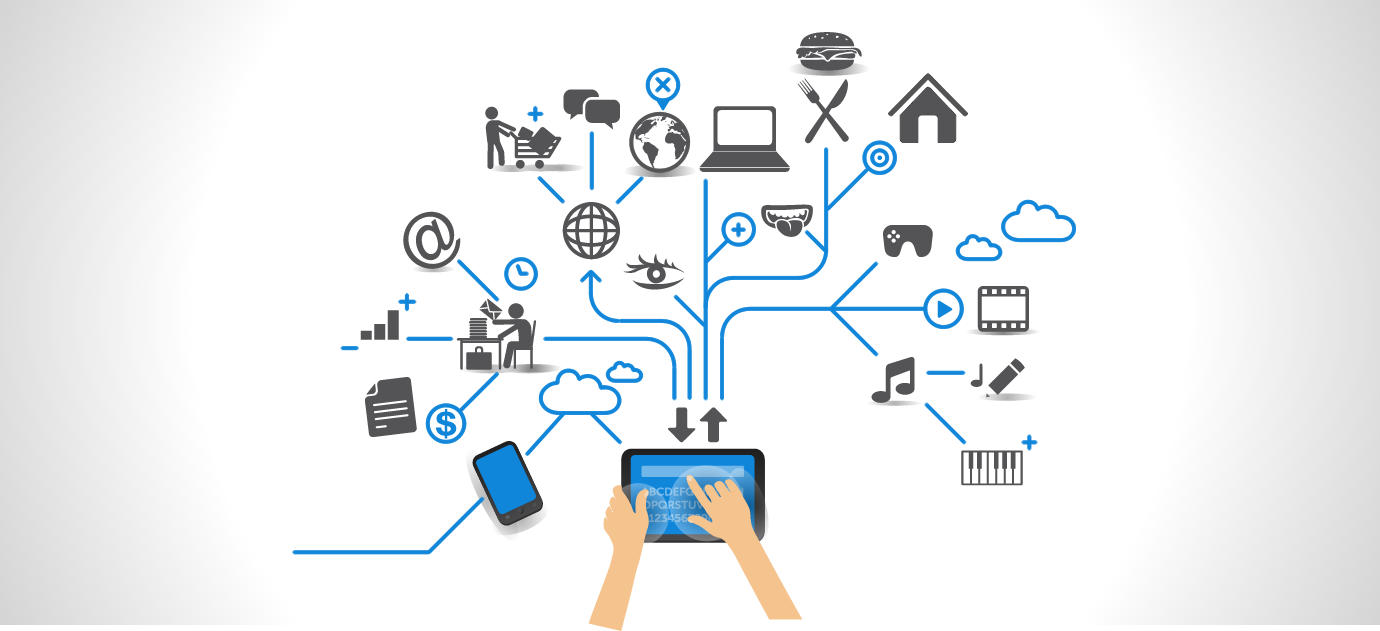
Internet of Things (IoT) is invading our lives in many ways !
Another two decades passed for the advent of what we know as IoT which in the initial days had imagination run wild on use cases and potential; auto-replenish refrigerators, trashcans and garbage bags posting to social media on what you consumed, it has been a wild ride for dreamers and thinkers. Two decades later, price and technology improvements have started shaping some of the whacky ideas into reality. The possibilities are exciting and scary at the same time with traceability resulting in loss of privacy for individuals and society.
Today almost all of us are being tracked by virtue of our presence on the internet and mobile phones we carry; almost all websites now what to send notifications across devices, track our movement, maps store data of directions we ask for and travel we complete; loyalty, credit and debit cards store transactions creating personas that would probably scare the hell out of us. Finally our fitness bands and smartwatches gather vital data that can influence our insurance premium, healthcare costs and medical profiles.
Current hype is all about transportation which has already seen aggregation and disintermediation on a large scale globally. Add autonomous to that and suddenly it starts impacting a large number of ancillary industries as the world moves to conveyance as a service. No more car loans or insurance, or scares with crude prices fluctuating, or breakdowns; no worries about parking slots at work or when out with friends or shopping; no traffic violations to worry about, toll payments, or upgrading the car ever so often.
The most beneficial aspects of Internet of Things come to life with Smart Cities where the number of use cases keeps increasing. Smart energy management, traffic monitoring, water management and leakage detection, waste disposal, and citizen services. Protection of energy grids or control of emissions and gases, and monitoring, surveillance of public infrastructure, law and order round up the IoT enabled services. Smart Cities also promise ubiquitous wireless connectivity to offer services and track tagged individuals.
Another benefit that the industries across have garnered is in temperature controlled logistics; food chain definitely benefits from IoT enabled trucks and vans, the bigger beneficiary has been the healthcare industry with medicines and pharma products retaining efficacy when transported and stored in defined controlled environments. The industry has boomed with the availability of efficient and reusable technologies that now dominate across use cases; though a decade after the world’s largest retailer mandated use, unit level tagging still to take off.
Irrespective of industry, IoT promises to provide new found opportunity to improve internal operational efficiencies or the way customers interact with the company. Industry wise use cases are plenty with Consultants willing to provide useful to harebrained ideas. Startups are also beginning to impact this space with innovative technologies and use cases that challenge conventional wisdom. The challenge to enterprises is to weave these into the exiting organization fabric without disrupting business as usual.
Symbiotically linked to mass adoption of IoT is the ability to analyze and mine insights from the vast pools of data that is flowing in with ever increasing speed. Our ability to store and analyze data has kept pace with the data streams that threaten to flood storage space if not managed effectively. The ability to separate the real stuff from the noise will differentiate the grades of success enjoyed by companies and their customers. Newer data sources and correlations make better actionable insights fueling the IoT wave.
It is contingent on business and technology teams to continuously explore new IoT technologies and use cases; the potential to disrupt is not always obvious at face value. Driverless cars will put out of earning more than a million people directly and many more indirectly. Smart energy sensors have already started slowing down the increase in energy consumption; IoT has also improved efficiency factors in linear production facilities and warehousing. Smarter, cheaper, and relevant is the way for IoT to keep everyone on their toes.
Newsletter
Sign Up for Monthly Newsletter
Recent Tweets
CONTACT US
Crux Center for Security
Research and Events (CCSRE)
3rd Floor, Tower-B, Unitech Cyber Park
Sector 39, Gurugram,122022
0124- 4207903, 05, 06
Copyright © 2016 Crux Center For Security Research And Events (CCSRE) | All Right Reserved
